My father was a big advocate of old cowboy guns. Hailing from Europe by birth and upbringing, his fascination with the old West and the cowboys who won it bordered on overzealous. Any gun good enough to be preferred by the old-time cowboys was good enough for him. He had a point. Thanks to companies like Uberti, people can capture and harness a little piece of the West.
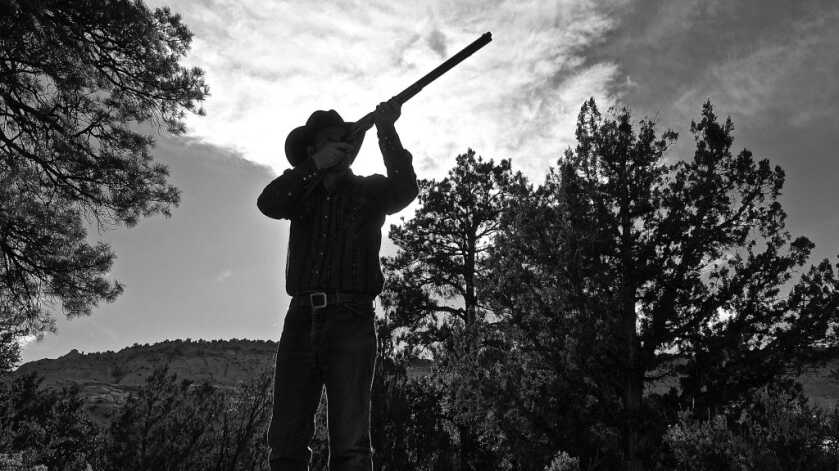
Innovation is Born
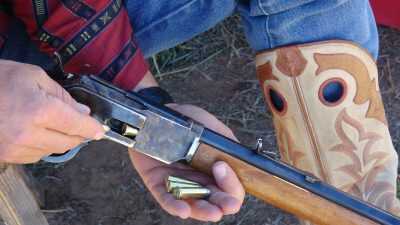
The mid-1800s was a time of turmoil, heartache, and invention in America. The Civil war prompted an already imaginative congregate of firearm makers and designers to get even busier, and in a few short years, America left single shot muzzleloaders in the dust as it gave birth to the first truly effective high-capacity, breech-loading, repeating firearms. Arguably the most notable was Winchester’s model 1873, which swallowed a double handful of ammunition in one gulp, cycled and fired as fast as a man could run the lever, hit with passable authority, and was good medicine for bad bears and banditos.
An American Icon — The Winchester ’73
The Winchester ’73 left the challenges of earlier lever-action designs behind, proving itself to be almost entirely problem-free. Colt was quick to get an instrument in the band by chambering its Peacemaker revolvers for the same .44-40 cartridge (then the .44 WCF, or Winchester Center Fire). The round carried a .427-ish 200-plus grain slug pushed by 40 grains of black powder, and while not as authoritative as the larger cartridges of the day, still hit hard enough to do the job.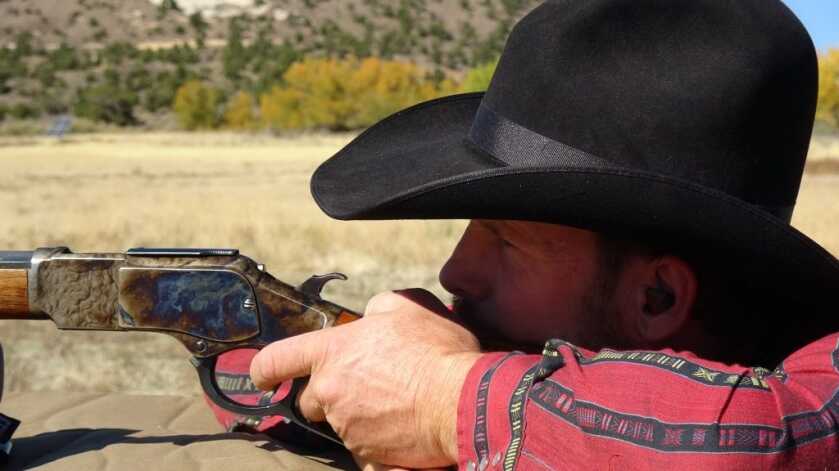
Suddenly, after a couple centuries of carrying a single-shot, front-stuffing longrifle and – if one was rich or lucky – a single-shot dueling pistol, frontiersmen and cowboys could pack a repeating rifle and matching pistol, both firing the same “bullet”. They were, in a sense, the AR-15 and Glock of the 19th century.
Guns of the West
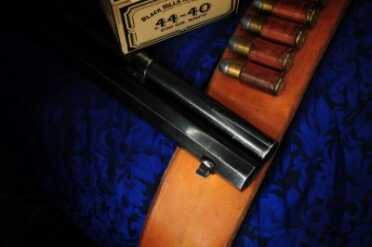
The front sight of the Win. ’73 Sporting Rifle is a semi-fine post. It’s dovetailed into the top flat of the octagonal barrel.
As a youth, I developed my own passion for classic Old West firearms. I learned to use a cap & ball Colt 1860 Army long before I learned to use a semiauto weapon. One of my favorite guns in my father’s small collection was a reproduction Winchester ’73 made by Uberti, used, but in beautiful condition. When I was in my mid-teens, my father gave me the rifle. I carried that gun for years of cowboying and mountain wandering, and worn wood and bluing reflects the rough miles and time in my saddle scabbard.
It’s not as accurate as it once was – the years, miles, and several thousand rounds having taken their toll, but the old rifle still shoots fast, smooth, and reliably. In fact, I’ll stick my neck out and opine that at close range the old rifle and I could hold our own in a steel-target matchup against the average citizen with an AR-15 – at least for the first dozen or so rounds.
Read About More Guns of the West
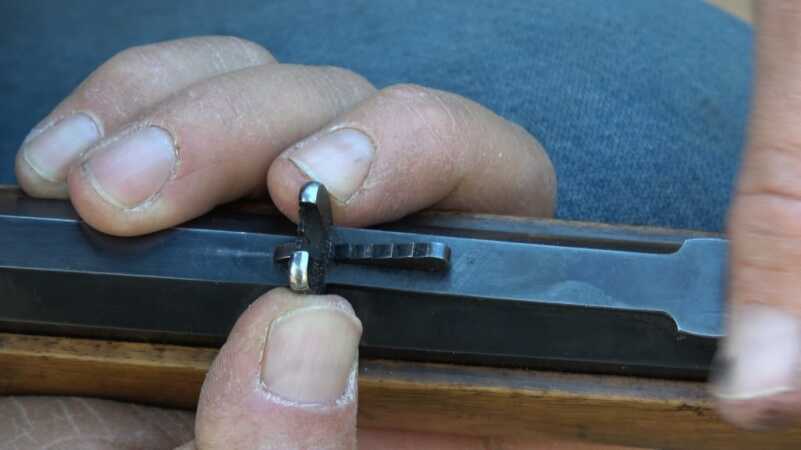
The author’s ’73 features a simple adjustable rear buckhorn sight.
Modern Offerings
Currently, Uberti offers fine reproduction Winchester ‘73s in seven iterations, ranging from the super-short 16.125 inch barreled Trapper up to their 24.25 inch Sporter, with available options including octagonal, round, or octagon-to-round barrels, pistol or straight grip, crescent or shotgun buttplate, blued or color casehardened buttplate, lever, and frame, and more. Three cartridge chamberings are offered, including the afore-mentioned .44-40, the .45 Colt, and .357 Mag.
I tested four currently available .44-40 factory loads through my old Uberti Winchester ’73 for accuracy, velocity, and reliability. Predictably, the rifle functioned perfectly without a single malfunction. Accuracy was less than stellar, but a younger rifle aimed by younger eyes would almost certainly shoot tighter groups. Results are posted below.
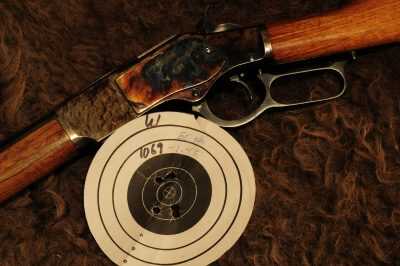
Forty-something year-old eyes and rifle aren’t a great combination for accuracy. But the author’s rifle still shoots well enough to get the job done.
Testing was done at 50 yards over a bench, with the accuracy determined by averaging three, five shot groups. Velocity was measured at 10 feet from the muzzle using a Shooting Chrony chronograph.
| Ammunition | Velocity (FPS) | Accuracy (Inches) |
| Black Hills 200-gr. RNFP | 1,141 | 2.06 |
| Hornady 205-gr. Cowboy | 995 | 2.57 |
| Winchester 225-gr. Cowboy Action | 902 | 2.94 |
| Winchester 200-gr. Power-Point | 1,069 | 2.01 |
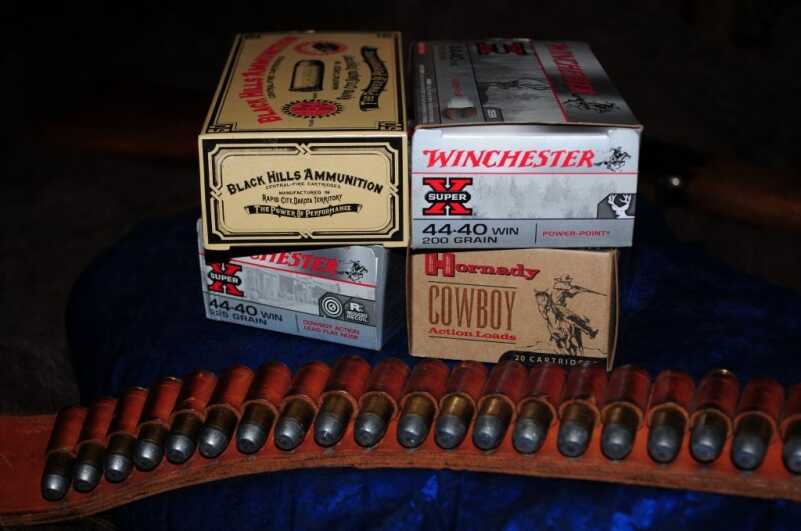
The author found four currently available factory loads for his Winchester ’73. Three were designed for Cowboy Action shooting, one for hunting.
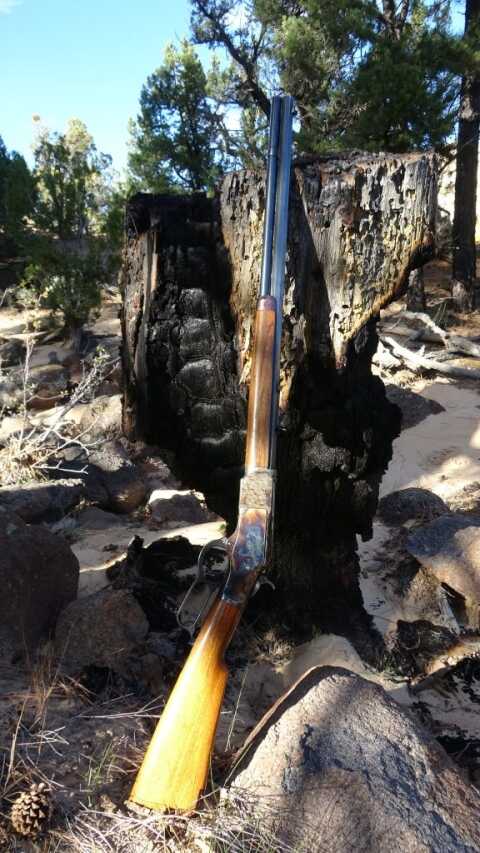
It’s a noble rifle with a noble history.
Lasting Impressions
The Winchester 1873 handles and operates more gracefully than most modern rifles, including modern-designed lever actions. It was designed during a time when men carried their firearms as a matter of course while doing chores, riding to town, or tending cattle. It was made to be a friendly companion. In other words, it balances and carries well in the hand, slides in and out of a saddle scabbard with ease, and is as graceful as a ballroom dancer.
Crossbar safeties were an evil yet to be invented, the half-cock notch on the ‘73 acting as a handy, serviceable safety. A dust cover slides completely over the ejection port. This helps prevent dirt and debris from clogging the action, automatically pushing out of the way when the action is next cycled. The lever can be locked down if desired. Simply turn the lever lock at the rear of the lever loop. Cartridges are thumbed in via a handy loading gate on the right face of the frame. They’re swallowed one after another with enchanting volume.
Sights on my rifle include a simple but effective adjustable rear buckhorn and a moderately fine post front, both dovetailed into the top flat of the full octagon barrel. Capacity is 13 + 1, and weight is right around 8 pounds.
Today’s Rifles
Nowadays, the currently manufactured “Sporting Rifle” made by Uberti is the twin to my lovely old rifle, is readily available through various gun shops across America, and sports an MSRP of $1,259. Street price would be a bit less.
For more information about Uberti firearms, click here.
To purchase an Uberti Winchester 1873 on GunsAmerica, click here.

A noble firearm indeed! It is said that the two truly American forms of art are jazz and comic books but I would suggest that firearm design was once a true American and truly American art form. Sadly, such technical achievements of functional art have fallen to the wayside in favour of cheap-to-produce plastic schlock. The 1873 is the pinnacle of grace among long arms; beyond that the notable actions get too big or a bit clunky and lose the unparalleled grace of the Gun That Won the West. I may have to get out my DVD of ’73 Winchester and watch it again. As much as I enjoy .357 Mag in my modern arms, I would love to pick up a ’73 in 38-.40 or .45 Colt someday. A reproduction of such an artifact as a ’73 is corrupted at best or poorly counterfeited at worst when chambered in a more modern cartridge like a .38 Special or .357 Mag, no matter how practical the cartridge.
I have the REAL THING for sale – made in 1880, by WINCHESTER go to gunsamerica.com and buy it.
How does this rifle group when using high performance .357 mag?
I assume it will handle .38 spec fine if chambered in .357
I am a European immigrant. I was always fascinated by ANYTHING Old West as a kid. And from as early as I can remember, I always felt a deep attraction for Western guns, and in particular those made by Uberti, a company that I’ve revered ever since. It isn’t a stretch to say that Uberti plaid a role in the build-up of my determination to immigrate to America, which I did as a young man. I still own two Uberti guns, and while I keep buying and selling guns for fun, and sometimes to make an extra buck, I will always keep these two, a Navy 1861 and a Winchester 73 in .22 because they’re just an integral part of the child that’s alive and well in my heart.
Gerard, you might stretch a bit and get the ’73 in .45 long colt…a delight to shoot, and has more authority. I have one, and love the handling and feel of the piece. Glad that you have joined us in America, and our appreciation for the second amendment. Bienvenue…